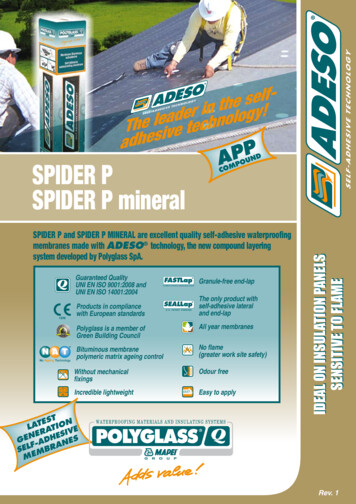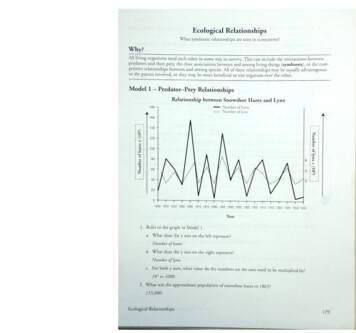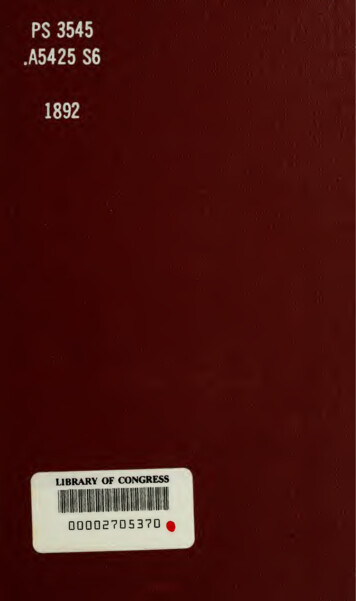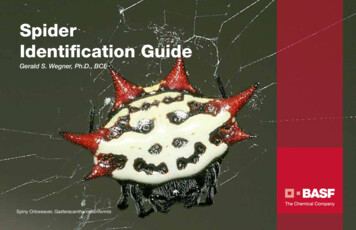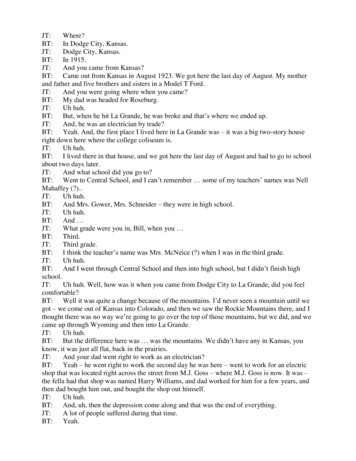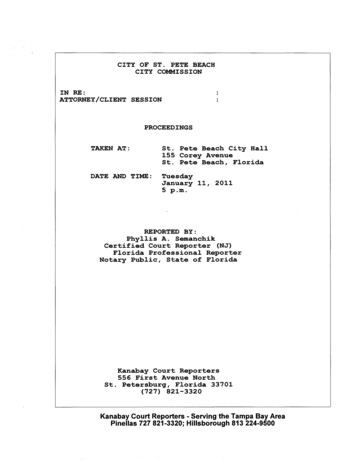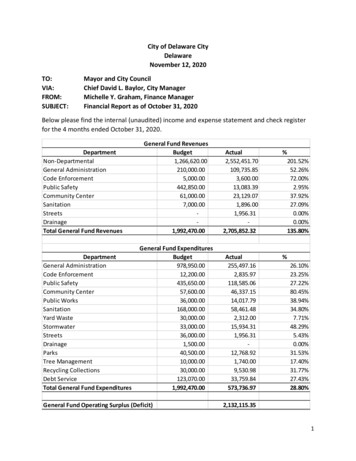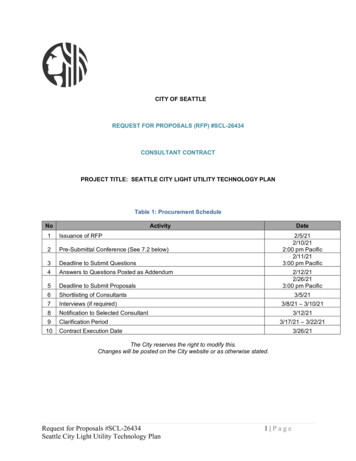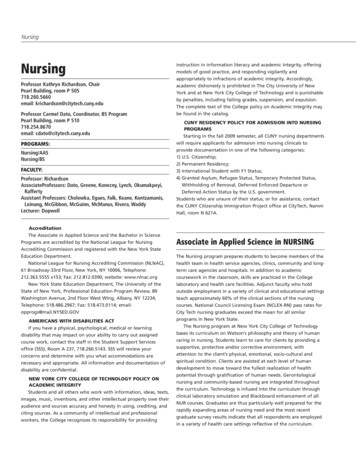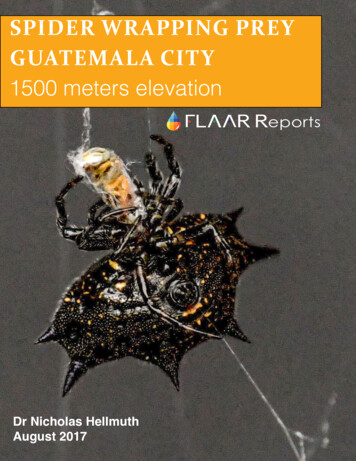
Transcription
Spider Wrapping PreyGuatemala City1500 meters elevationDr Nicholas HellmuthAugust 2017
Spider WrappingPreyGuatemala City1500 meters elevationFLAAR Guatemala 2017
Spiny Orb-WeaverGasteracantha speciesNames for this spiderIn Spanish the word provided on theInternet is araña panadera.In English the word is either Spiny OrbWeaver or Spinybacked Orbweaver(sic, with no hyphens).The Genus is Gasteracantha. Thespecies may be cancriformis but if youcan correct us, please let us know:frontdesk “at” FLAAR.org.is dark. It’s top is white with blackspots and black spines. The color ofall the Gasteracantha cancriformis onthe Internet images are bright; evensometimes the spides are cute pink.Due to the size of this spider weestimate it may be a female, but wehave not analyzed the spider undera microscope (since we don’t wantto take it from its web and its nicelywrapped food sources).The color of this spider’s underside*We estimate the size to be 1.6 cm wide and 1.1 cm long (front to back).Spiny Orb Weaver - Gasterachanta species3
Photo by Dr. Nicholas Hellmuth, Nikon D5, Lens 100 mm f/2.0 Carl Zeiss Makro-Planar 2/100 ZF.2, F 11,Speed 1/320, ISO 12800, Tripod: Gitzo G1548 GT, Tripod Head: Arca-Swiss original big ball (over 30 yearsold)
Here is the spider probably severalminutes after it has started to wrap itsfreshly caught prey.It was pure coincidence that wehappened to be looking at this spiderweb at this moment (since there aredozens of webs all over the placearound our office).Photo: Nicholas Hellmuth, Gitzotripod,Arca-Swiss tripod head (theoriginalone, over 30 years old), NikonD5,lens Zeiss 100mm macro f 2.0, speed1/320ISO 12800This is a tripod which can hold yourcamera at 2 meters or 3 meters high.Since the web was two meters up, andat an angle, I needed a tripod to raisethe camera even higher, to aim downparallel to the orb web below. We havea team of trained and experiencedcamera assistants to do all this. Weused a large folding ladder so I couldsee through the lens.Could surely have used an iPhone,but we don’t usually have time to dothis; especially not when the spider ismoving rapidly.Focus is not perfect because thespider is not large and was moving,plus the web was bouncing up anddown due to the spider’s movement.Spiny Orb Weaver - Gasterachanta species5
The spider rolls theinsect with its feetas he uses freshweb material towrap the insect.This is a closeupof the earlier prey.Seems to be bee.Since we raiseover 80 speciesof native flowerswe attract lots ofbees.Spiny Orb Weaver - Gasterachanta species6
Spider is stillbusy handlingits prey.Spiny Orb Weaver - Gasterachanta species7
Spider iswrappingprey.Spiny Orb Weaver - Gasterachanta speciesstillits8
Spider is still wrapping its prey.Spiny Orb Weaver - Gasterachanta species9
Photographs from underneath the orbweb, looking upPhoto by Erick Flores, Canon EOS 1DX Mark II, Lens: MP-E 65mm f/ 2,8 1-5x Macro Lens, F 2,8, Speed:1/80, ISO 160, Handheld (No Tripod), Green Flash Macro Ring LITE MR-14EXThis was photographed at 9:20 am inthe morning. So this is probably theother bee that by the afternoon wasstored in the upper left part of the web.Photograph by Erick Flores, CanonEOS 1DX Mark II. Note that we havegood quality cameras; this top of theline Canon, plus the Nikon D5, the bestNikon. We also have a Nikon D810,plus plenty of macro equipment.Spiny Orb Weaver - Gasterachanta species10
Now that I look at this more closely,I estimate the spider may actually beeating the bee, eating the inside of itshead.We used a white background; this iscardboard that the assistants holdover the web so that your attentioncan focus on what the spider is doing.We do not remove these spiders fromtheir web.Appendix AThe Orb WebHere are photographs of the top of the spider by Erick Flores, one of the severalphotographers at FLAAR Mesoamerica in Guatemala. He has experiencephotographing here, and has also assisted Dr Nicholas in Germany and othercountries.Spiny Orb Weaver - Gasterachanta species12
To photograph the top of the spider you need to get yourself and the cameratotally under the web without breaking the spider web’s support system.Underneath the spider is white. From the other side of the web the spider isblack.Spiny Orb Weaver - Gasterachanta species13
Spider web silk is one of the mostimportant natural materials in the worldin terms of its chemical and physicalproperties. There are projects all overthe world on spiders and their silk.he has been doing field work in remoteareas of Guatemala for the last eightyears. So any project which seeksa partner in a spider project, FLAARMesoamerica (Guatemala) and FLAAR(USA) are a potential asset.Since Dr Nicholas has been inGuatemala since age 17 he has seen alot of spider webs of diverse structures(far more than just orb shaped). PlusSpiny Orb Weaver - Gasterachanta species14
This FLAAR Report may be used as class material by any instructor orprofessor at no cost. Please make the link from your web site to thedownload on www.maya-ethnozoology.orgThis spider report may also be used by museums or other organizationsfor their members at no cost. Please make the link from your web siteto the download on www.maya-ethnozoology.orgPhotography: Dr Nicholas Hellmuth and Erick FloresDesign & layout: Ma. Isabel BonillaFLAAR Guatemala 2017
rgwww.maya-ethnobotany.org
August 2017. Spider Wrapping prey guatemala City 1500 meters elevation FLAAR Guatemala 2017. Spiny Orb Weaver - Gasterachanta species 3 Spiny Orb-Weaver . download on www.maya-ethnozoology.org This spider report may also be used by museums or other organizations for their me
